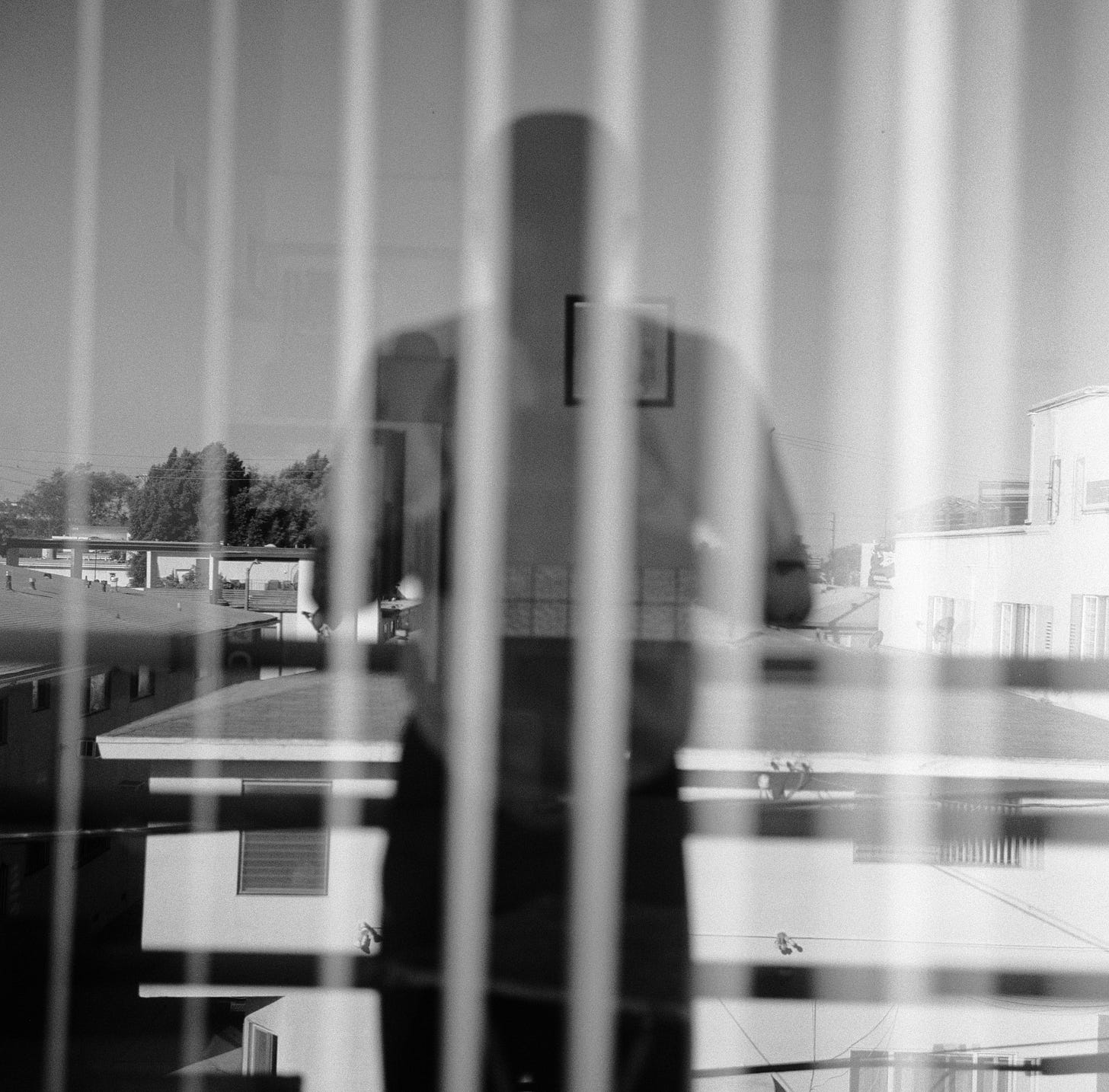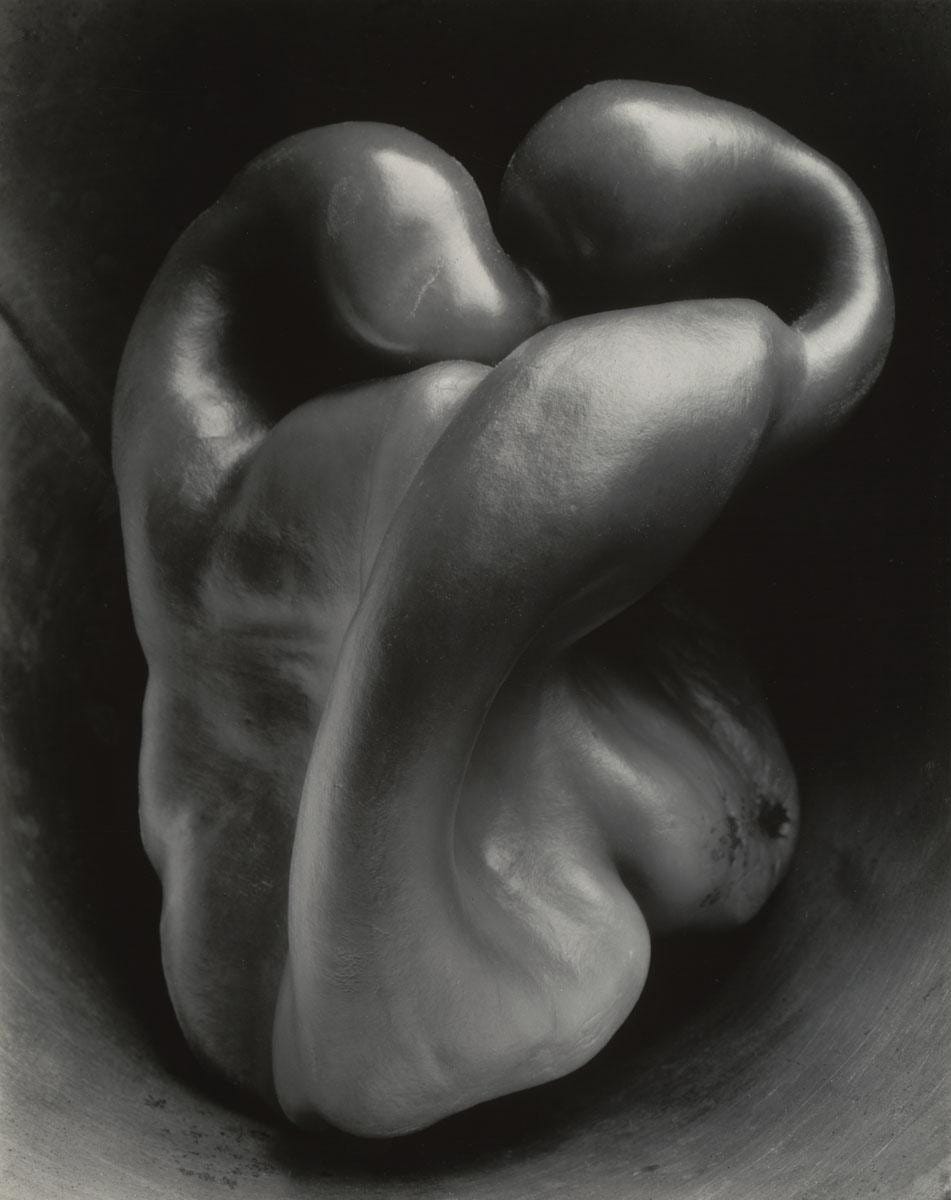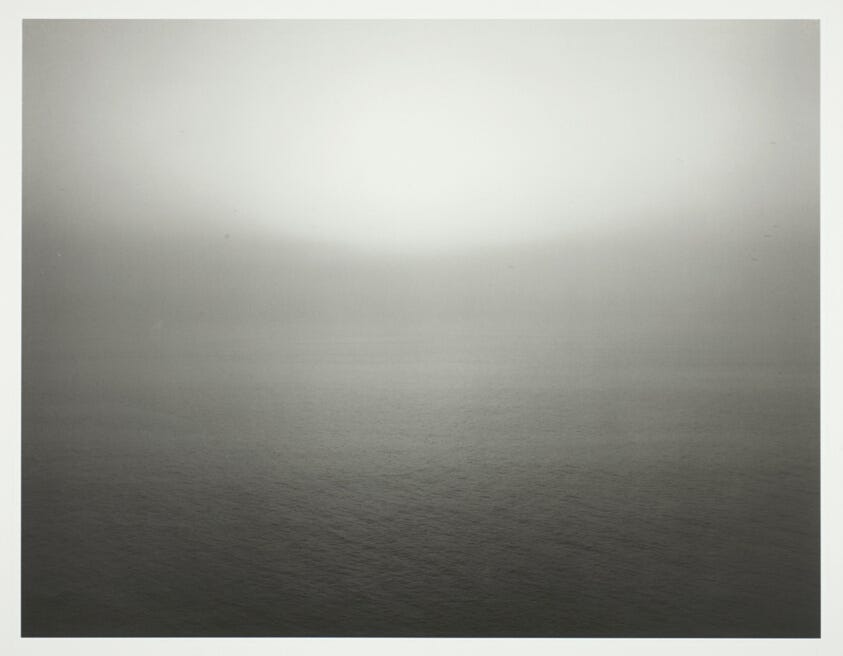I remember the first moment I met Ikechukwu Sharpe. I was working reception in the lobby of the talent agency CAA. I was immediately struck by Ikechukwu’s energy—warm, engaged, present. We were both fresh out of college and new to Los Angeles. We became each other’s guide in the mailroom, and later, when we finally “got our desks” and graduated to being assistants.
Working with Ikechukwu humbled me. He could—and still can—connect with anyone. I’d walk around with him in the building and we’d inevitably get stopped multiple times. CAA was intense but Ikechukwu never seemed phased by it, never seemed to lose himself or his values.
I didn’t call myself a writer at the time and Ikechukwu didn’t call himself an artist. But I know that’s why we gravitated towards each other. We were both children of immigrant parents struggling to stake a claim in our right to dream. It’s been a joy to watch his practice emerge since, and I can’t think of anyone better to feature for the first installment of Daydream Dispatches. - E
Ikechukwu Sharpe

I am now obsessed with refining my photographs to the point in which it creates a more open and interpretative experience for myself and others. Impactful photographs implicitly ask the viewer to probe and inquire, to reflect, come back to and form new meaning based on continual lived experiences.
Take Pepper No. 30 by Edward Weston as an example. What is normally seen as an ordinary fruit has transformed into two lovers intertwined. I softly give thought to Couples Dancing by Roy DeCarava, Soho Bedroom by Bill Brandt, André Kertész’s Polaroids, or Binky and Tony Forever by Deana Lawson. That’s me, though – to others it could just be interpreted as an invitation to be present for the small, whimsical, ordinary things in life.
bell hooks speaks about this process of forming new interpretations as “defamiliarization.” In Art on My Mind, (a significant book all artists should read that speaks to the importance of art as a tool for revolution and liberation), hooks says:
Two central factors that help us to understand black folks’ collective response to art in the United States are, first, recognition of the familiar - that is, we see in art something that resembles what we know - and, second, that we look with the received understanding that art is necessarily a terrain of defamiliarization: it may take what we see/know and make us look at it in a new way.
As a process, defamiliarization takes us away from the real only to bring us back to it in a new way…we must shift conventional ways of thinking about the function of art…there must be a revolution in the way we see, the way we look…we must set our imaginations free as we move towards the decolonized self.
Below are some photographs setting my imagination free. I am curious what these photographs evoke in you.

I recently began to work in large format analog photography as a way to become more present and intentional in my life and creative practice. In 2022, I was burnt out from grinding 24/7 (y’all know that first generation hustle & pressure) and experienced the physical side effects of not taking care of myself holistically the way I ought to. As I spent the summer months recovering in bed, I immersed myself in Tricia Hersey’s Rest is Resistance: A Manifesto, a timely book on the “liberating power of rest, daydreaming and naps as a foundation for healing and justice.”
As I was reading this book (alongside napping and meditating), I was also reflecting on what areas in my life needed the power of rest. One such area was my creative practice. In a world that demands constant output and quantity from artists, I fell victim to believing I always needed to produce and share my work online to “stay relevant, top of mind and important.” None of those things are true, and in fact perpetuate our current capitalistic and white supremacist system. This system demands, preys and feeds on constant output from us without care for our bodies and environment; this system thrives on desire, greed and selfishness.

Recognizing my physical and spiritual exhaustion in trying to keep up with the machinelike pace of our current society, I realized I had to pump the brakes and shift my approach to how I make art. Finding solace in nature and inspiration from God, I was provided with a deep understanding of the importance of emulating the subtle ways our natural world tells us to live, commune and create. Our natural world is slow, consistent and patient. Observational. Responsive, not reactive. Adaptive. Abundant. Expansive. Loving. Nurturing. Graceful. Gentle. Powerful. Majestic.
Choosing large format as a medium to work in suited my newfound appreciation for living and creating at a slower pace. Beyond the physical demands of carrying a large format camera and the necessary equipment, it necessitates a “responsive” methodical approach due to everything needing to be done manually. From setting up a tripod, to carefully composing an image on the upside down ground glass, to exposing the film sheet at the correct exposure and at the right time of day, to developing the film sheet at the correct temperature, this medium makes it impossible to “pull out and take a picture,” a method we are so accustomed to doing with our phones.
Despite all of this, large format has many benefits. Two of the biggest benefits are the superior image quality (that rivals and sometimes betters the best digital cameras of today) and total control of the technical and creative aspects. Better put, there are no creative or technical constraints to what one could do.
Through working in large format, I have been undergoing a process of unlearning and relearning what photography means to me – the importance of first feeling the world around me before photographically communicating my insights to the world in a way that expands our visions, thoughts and horizons. Such insights do not come from a spur of the moment – it requires a deep understanding of the broad strokes and subtle nuances of the world. In other words, it requires a strong point of view in order to photograph a subject in a way that conveys its essence and depth. One who is an expert in a subject is able to not only distill information about it in a simple way for others to understand, but find new ways to create an interpretive experience for others.
This process also demands previsualization: knowing what the end photograph would be in the beginning before even taking out the camera. It begins with the first contact of feeling something that is present or taking place, and then using intuition and intellect together to achieve this.
What am I strongly feeling about this subject or theme I deeply care about? What is the strongest way I could convey what I am feeling through the lens I am using, the lighting available, the time of day, the composition, the aperture, the shutter speed, etc.? What is my goal? What do I want to say to others that is resonant?

For me, I deeply care about the beauty and protection of nature. I care about restoring the relationship minority communities have with the land. I care about leaving our natural world for future generations to come. I also care about human life and human rights. I care about people being and living fully in their authentic selves. As it translates to photography, this means I am considering and cultivating a practice in landscape and portrait photography. I want to use photography as a medium to protect and preserve our natural world, and photograph humans in a way that shows them for who they truly know themselves to be.
As with all things in life, failing is a part of the process in trying to photograph an emotion or statement I am aiming to evoke. There is a small margin of error in large format (although film can be forgiving when you overexpose). Even though it is a steep learning curve, as my mentor would say, “It will result in rewards I do not yet see – experimenting and making mistakes is all part of it; we learn more from that than from the "perfect" images!” It is not the destination, it is the journey, after all. The journey has been incredible so far; I have learned to embrace failure, experiment freely and constantly learn in order to become a master in full command of my art. I look forward to a lifetime of learning – a lifetime of seeing and experiencing our world with curiosity and eyes unclouded.
For the first time in a long time I feel more connected to my physical body, especially to my hands and fingers. From loading the film into the film holder in the dark (or in a changing bag), to pushing down the cable release, to agitating the film or paper when developing or printing, I am reclaiming parts of myself that I have given to technology. I feel more alive, especially as I am paying more attention to what is around me and participating more with the world through my body. I see myself taking up gardening too so I could feel the soil and feel closer to the Earth. While technology has been transformative, it has also dulled our senses, inner wisdom and human experiences. It has made it so we isolate parts of ourselves, or important parts of a creative process because it is convenient. The most important parts are being ceded to technology. But those parts of us that are unique are needed the most. Those unique expressions, thoughts and creativity that technology cannot replicate, no matter how advanced it becomes. It is important to own physical items (books, records, etc.) because they tell our stories for those living after us (especially with the power of AI, a film sheet is a sure way to tell if a photo is real!). Technologies advance and become obsolete, making it difficult to preserve.
In Rest is Resistance, Tricia Hersey mentions how Harriett Tubman was “known to take time for napping, talking, praying, listening to nature, watching the stars and dreaming.” How incredible. Now more than ever, stillness and slowness is needed for us to find clarity and purpose in our lives for the greater good of the world and especially for those around us. As an artist, I find it important for me to play my part by using art as a medium to connect deeper insights, reflections and revelations for others. To do the research to illuminate and provide new meaning. To shift our perspective to more fully understand ourselves and our world.
I will end my daydream here with one of my favorite quotes from Wynn Bullock. You all take care and stay blessed.
“Searching is everything – going beyond what you know. And the test of the search is really in the things themselves, the things you seek to understand. What is important is not what you think about them, but how they enlarge you.”
Always on my mind:
~~ by Ana Roxanne. A slow, sublime and soothing record.
Fabiana Palladino by Fabiana Palladino. An absolute flawless record from top to bottom.
Portrait of a Lady on Fire by Céline Sciamma. A master in full command of her art.
Michael Jordan highlights. Poetry and jazz, delicacy and strength, in visual form.
Breath of the Wild. The best videogame I have ever played; a lot of real life lessons and gems here.









